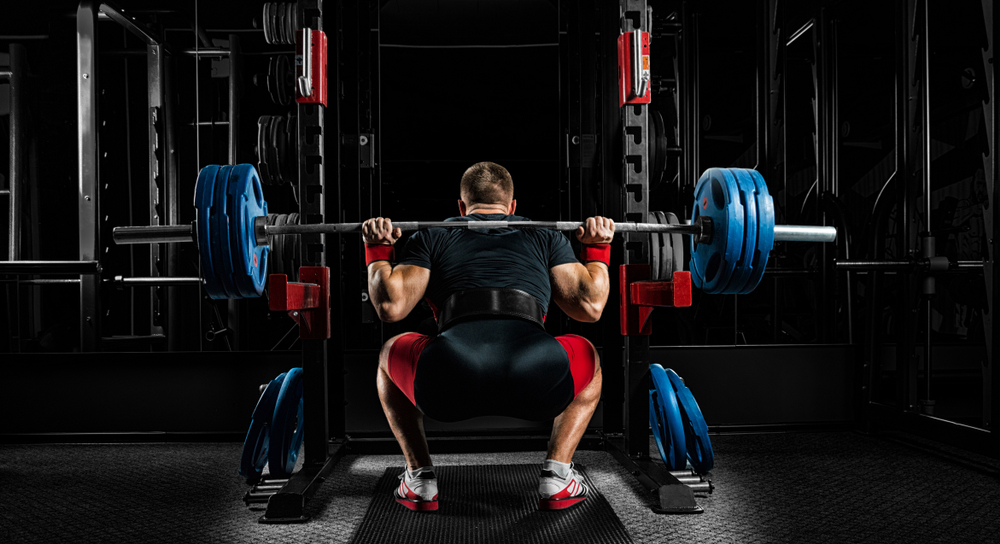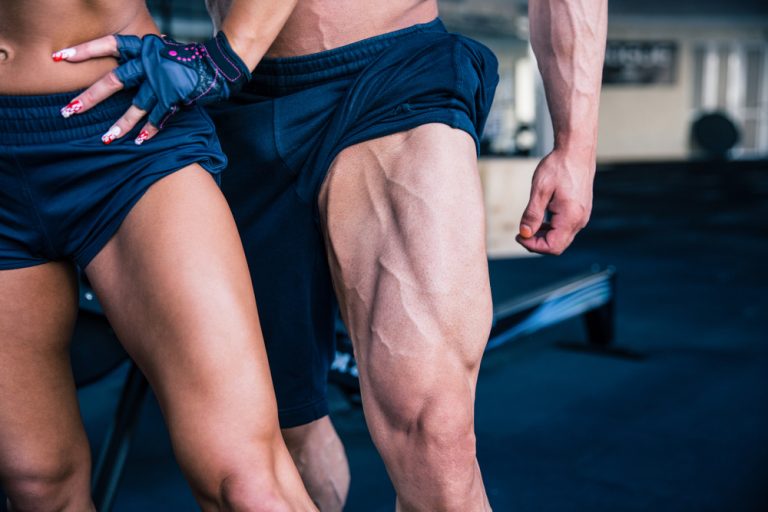Legs are the foundation of the body - no wonder then that their training should be the duty of every practitioner. Leg training should focus primarily on squats, or multi-joint exercises. These are the basic movements that - when properly done - bring the same advantages. However, many exercisers at the gym come out with a completely different assumption. Why? Learn more from Leg Training and Stereotypes.
Stereotypes about leg training
Leg training should form the basis of any gym workout plan. And regardless of the level of experience in strength training. However, it often happens that legs in training are simply skipped or treated very briefly. Exercising at the gym most reluctantly include in the exercise plan for the legs, among others sit-ups, etc. Therefore, many beliefs, myths and stereotypes arose around the leg training. Is it right? Below are the most popular ones.
Squats destroy your knees
This is the most popular stereotype about leg training. Do squats actually destroy knees? Of course, yes - but only those performed incorrectly. A full squat with the maximum technique and attention of the practitioner has no chance of destroying his knees. Such an approach to leg training, among others will allow you to build powerful and strong muscles, and strengthen the knee joints. Which squats are destroying your knees?
- Half-squats
- Quarter-squats
These variants of the exercise cause that the training load focuses, among others on the quadriceps muscle of the thigh and knee joint. This is associated with a huge tension on the kneecap, which has a negative effect on the condition of the knees. Therefore, it is best to perform a full squat.
Squats are destroying the back
The situation is very similar to that at the knees - of course, that exercise can negatively affect the muscles of the back. Squats only destroy the back if the exerciser neglects the correct technique of movement. It is also important to ensure a high level of body stabilization during exercise. And here it is best to take advantage of the smaller load, focusing on the movement pattern and the speed of performing the squat. There is no reason to give up this exercise as well as other things to your feet.
Exercises with heavy loads are dangerous
This is a logical conclusion - exercises with high loads are dangerous. This applies not only to the training of the legs, but also to the chest, back, shoulders, etc. Therefore, it is emphasized at every step that it is not a burden and the technique will make you a player. The best exercise is designed, among others to:
- increase strength
- improve endurance
- stimulate muscles to grow

Nobody has to train legs with weights close to the Maximum Weight - this is not the case in strength training. If, however, the training goal requires the exerciser to work with such a load, for example in squats, it is best to ask for the belaying of the training partner. A good way is to prepare for self-insurance - when squats (depending on the equipment of the gym) can be, for example, suspended beams at the level of the belt.
I do not make legs - I wear pants
The gyms are convinced that since you can not see the legs, you do not have to do them. What else is a cage, biceps and triceps, right? Paw and chest must be. It turns out, however, that such an approach is a huge mistake. Why?
First of all, leg training helps to avoid muscular disproportions and to maintain a proportional figure.
Leg training, however, is not only a visual effect. It is he who causes the greatest burst of natural testosterone and growth hormone in the exerciser. And this in turn has a direct impact on building the muscle mass of the whole body - including the popular frame and paw.
I run, so I do not make legs
This is a flagship excuse for people who do not want to practice their legs. Of course, this does not apply only to gymnasts, but also for example
- runners
- crossfitters
- triathletes
The fact is that not everyone needs to have huge leg muscles - like professional bodybuilding athletes. But leg training is not only to build muscle, but also to develop other motor features, e.g. to strengthen and build their power.
It is connected with the increase in stabilization, among others joints, ligaments and tendons. This allows them to maintain their highest efficiency and increase the capacity of the body, regardless of the type of training being practiced.
It is worth mentioning that it is also an excellent prevention of injury for everyone.
Leg training and stereotypes
It is certain that leg training should be an inseparable element of any training plan - regardless of the sport practiced and the training goal. Such training, based best on squats, is very hard and demanding self-denial. However, the benefits it brings include
- increasing the level of natural testosterone
- effects on the hypertrophy of other muscles
- proportional figure
- great mood
They are worth sacrificing the leg training day. There is nothing to be guided by the established beliefs about leg training. However, it would be appropriate to focus on the best technique of each exercise and look after every step. Leg training and stereotypes? No thanks.









